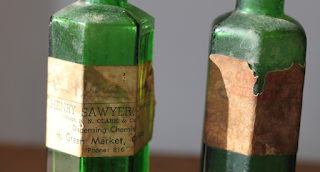A long time ago, 2010 in fact, I started playing with the use of wikis to create live documents to develop and share ideas.
The whole idea was, that as wikis lend themselves to the creation of structured text, one could build out from series of basic dot points to create some more structured text, much as I do with notable when researching something.
Apparently this is called 'scaffolding'. I just call it fleshing out an idea.
Wiki's have the great advantage of being shareable, either with multiple editors, or simply by letting people read and review online and post comments, or even simply projected on a screen in a brainstorming session and edited during the session.
And as a live document, it's not immutable meaning it can be used to reflect changes - such as for a project log to record who did what when.
And as always, I experimented on myself with some non critical bits and pieces.
The people I was working for at the time were not particularly keen (understandably so) on experimental servers mysteriously appearing on their network, so for my first experiments I used wikidot.com, which allowed you a free account with enough storage.
So I did my experiments, satisfied myself it was a good idea, but didn't take it further, for no other reason that the environment I was working in changed - the buzzword nowadays would be 'pivoting' - back then it was 'changing the focus'.
Basically the emphasis changed.
And I kind of forgot about my wikidot account, which left it kind of moribund. Not good practice, I should have closed it.
And so ten-plus years later, I had a little problem.
For years I've posted links to things I thought interesting to twitter.
Originally, it was to share interesting technical stuff with my team. Gradually I started adding some things I found interesting, mostly about archaeology and archiving, and this got some interest, so I carried on even after I retired because people seemed to get some value from what I did, and I enjoyed doing it.
As we all know, Twitter is pivoting so much now it's more like an erratic tumbling cartwheel than anything else, and I finally got to the stage where I'd simply had enough and canned my account.
This left me with a problem. I was quite happy on Mastodon, but Mastodon has a different vibe, less tolerant of people simply retooting content, and some (actually quite a few) of the people who followed me for my Roman history and archaeology links, hadn't made the jump.
So, since I'd forgotten to get rid of my wikidot account, I resurrected it and started collating a list of the things I'd read each day that I found particularly interesting. I didn't bother about stuff like 'Roman burial possibly found in Nuneaton', unless there was something particularly interesting about the burial site or internment.
I reckoned that most people who were interested in that sort of thing could pick the news up elsewhere.
And I then created a live document that I updated as I went.
And it's surprisingly valuable as something to refer back to, something I always had trouble with with Twitter.
I'm doing it for fun and to keep my skills up, and I'm hoping it adds some value. For the moment I'm just strangely surprised in how a twelve year old idea has turned out to be useful.



